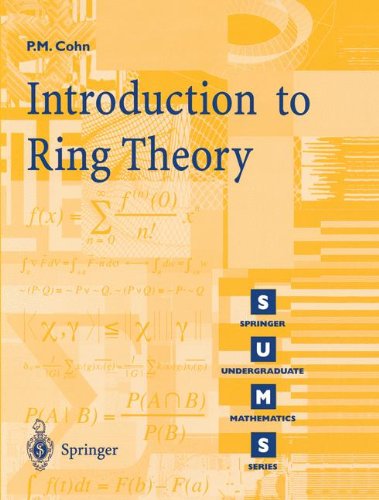Copies of the classnotes are on the internet in PDF format as given below. The "Proofs of Theorems" files were prepared in Beamer and they contain proofs of results which are particularly lengthy (shorter proofs are contained in the notes themselves). The "Printout of Proofs" are printable PDF files of the Beamer slides without the pauses. These notes and supplements have not been classroom tested (and so may have some typographical errors).
- Chapter 1. Basics.
- Chapter 2. Linear Algebras and Artinian Rings.
- Chapter 3. Noetherian Rings.
- Chapter 4. Ring Constructions.
- Chapter 5. General Rings.
Chapter 1. Basics.
- Section 1.1. The Definitions. Section 1.1 notes
- Section 1.2. Fields and Vector Spaces.
- Section 1.3. Matrices.
- Section 1.4. Modules.
- Section 1.5. The Language of Categories.
- Study Guide 1.
Chapter 2. Linear Algebras and Artinian Rings.
- Section 2.1. Linear Algebras.
- Section 2.2. Chain Consitions.
- Section 2.3. Artinian Rings: the Semisimple Case.
- Section 2.4. Artinian Rings: the Radicals.
- Section 2.5. The Krull-Schmidt Theorem.
- Section 2.6. Groups Representations: Definitions and General Properties.
- Section 2.7. Group Characters.
- Study Guide 2.
Chapter 3. Noetherian Rings.
- Section 3.1. Polynomial Rings.
- Section 3.2. The Euclidean Algorithm.
- Section 3.3. Factorization.
- Section 3.4. Prinicipal Ideal Domains.
- Section 3.5. Modules over Principal Ideal Domains.
- Section 3.6. Algebraic Integers.
- Study Guide 3.
Chapter 4. Ring Constructions.
- Section 4.1. The Direct Product of Rings.
- Section 4.2. The Axiom of Choice and Zorn's Lemma.
- Section 4.3. Tensor Products of Modules and Algebras.
- Section 4.4. Modules over General Rings.
- Section 4.5. Projective Modules.
- Section 4.6. Injective Modules.
- Section 4.7. Invariant Basis Number and Projective-Free Rings.
- Study Guide 4.
Chapter 5. General Rings.
- Section 5.1. Rings of Fractions.
- Section 5.2. Skew Polynomial Rings.
- Section 5.3. Free Algebras and Tensor Rings.
- Section 5.4. Free Ideal Rings.
- Study Guide 5.
Return to Bob Gardner's home page

